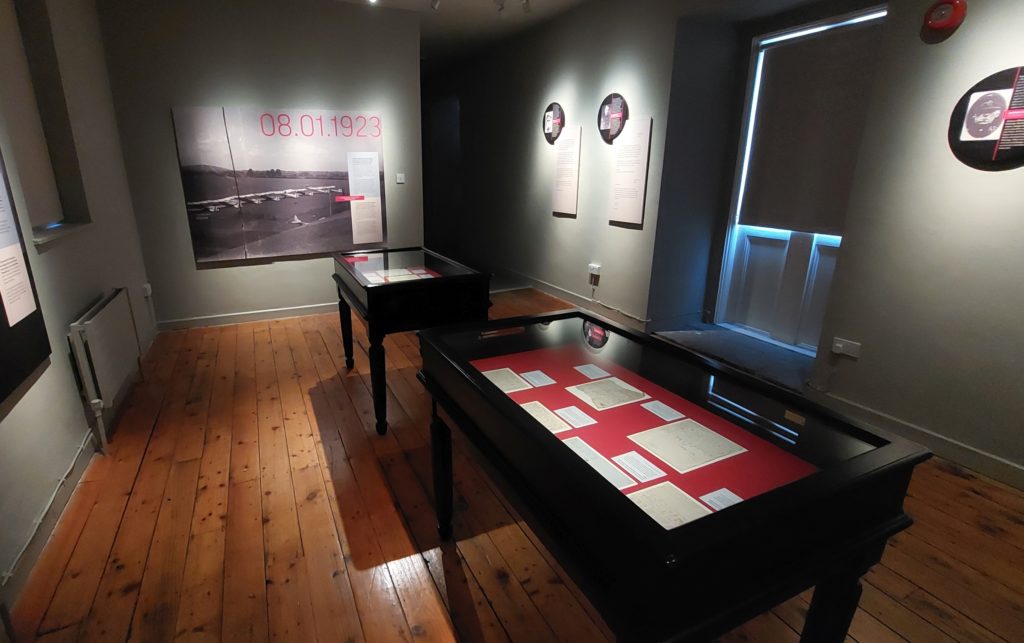TH SECOND part of an exhibition exploring the role of Kilmainham Gaol in Civil War state executions has opened.
The exhibition will include the last letters of Sylvester Heaney, one of five young Former State soldiers who were condemned on charges of treason.
In the final months of 1922, Terence Brady, Leo Dowling, Sylvester Heaney, Anthony O’Reilly and Laurence Sheeky were stationed on guard duty at Baldonnell Airfield.
It seems they had grown disillusioned with the Free State cause and had been secretly approached by members of a Leixlip-based anti-treaty flying column who wanted their assistance with a plan to attack the Airfield and seize the arms stored there.
While that plan never went ahead, the men nevertheless decided to desert from the Free State Army and join the anti-treaty side.
On 1 December 1922, 22 members of the Leixlip anti-treaty flying column, including the five former soldiers who had recently joined them, were captured by the Free State Army. The prisoners were brought to Wellington Barracks on Dublin’s South Circular Road for interrogation.
Some of the ex-Free State soldiers were still wearing the remnants of their National Army uniforms and, in the end, the five of them were identified as deserters. Now referred to as ‘The Leixlip Five’, they were then transferred to Kilmainham Gaol to face a military court martial on 11 December at which they were found guilty of treason and condemned to death.
They were to spend their final weeks as prisoners of Kilmainham Gaol before their execution at 8am on 8 January 1923.

The official statement issued by the Army made no mention of the exact location of the 8 January executions. A republican propaganda leaflet issued at the time assumed that they had been shot in Kilmainham Gaol, while many later sources said they were executed in Portobello Barracks. However according to their official death certificates, Sheeky, Heaney and O’Reilly were killed in Keogh (formerly Richmond) Barracks while Dowling and Brady were executed in Kilmainham Gaol. Significantly, Dowling and Brady were initially buried in Kilmainham Gaol, while the other three were interred in a burial ground in Arbour Hill Barracks.
In October 1924, the Free State government ordered that the remains of all of those who had been executed during the Civil War be returned to their families. The bodies of Leo Dowling and Terence Brady, as well as the four men shot in Kilmainham on 17 November 1922, were exhumed from the Gaol. A similar operation took place in Arbour Hill and other barracks and prisons around the country. The bodies were then returned to their families who could finally give them a proper funeral.
This little-known story of ‘The Leixlip Five’ forms the second part of an exhibition which explores the use of the Kilmainham Gaol as a place of execution during the Civil War. The first part of the exhibition opened on the centenary of the first executions of the Civil War which took place in Kilmainham Gaol on 17 November 1922.
The highlight of this second part of the exhibition is a remarkable collection of letters written by Sylvester Heaney in Kilmainham Gaol in the weeks prior to his execution. These poignant and heart-breaking letters are on loan to the Office of Public Works and Kilmainham Gaol Museum from his family and the Museum is honoured to be displaying them to the public for the first time.
In the letters he writes about his loneliness in prison, particularly at Christmas, and in a letter to his sister, Martha, he asked if she would send him some of the Christmas pudding so he could feel like he was sharing in the festivities with them.
His last letter to his mother ended with the lines: “I cannot say much only tell all my Sisters and Brothers to say a prayer for me and I shall meet you all in the next world. I was foolish but it cannot be helped now”.

